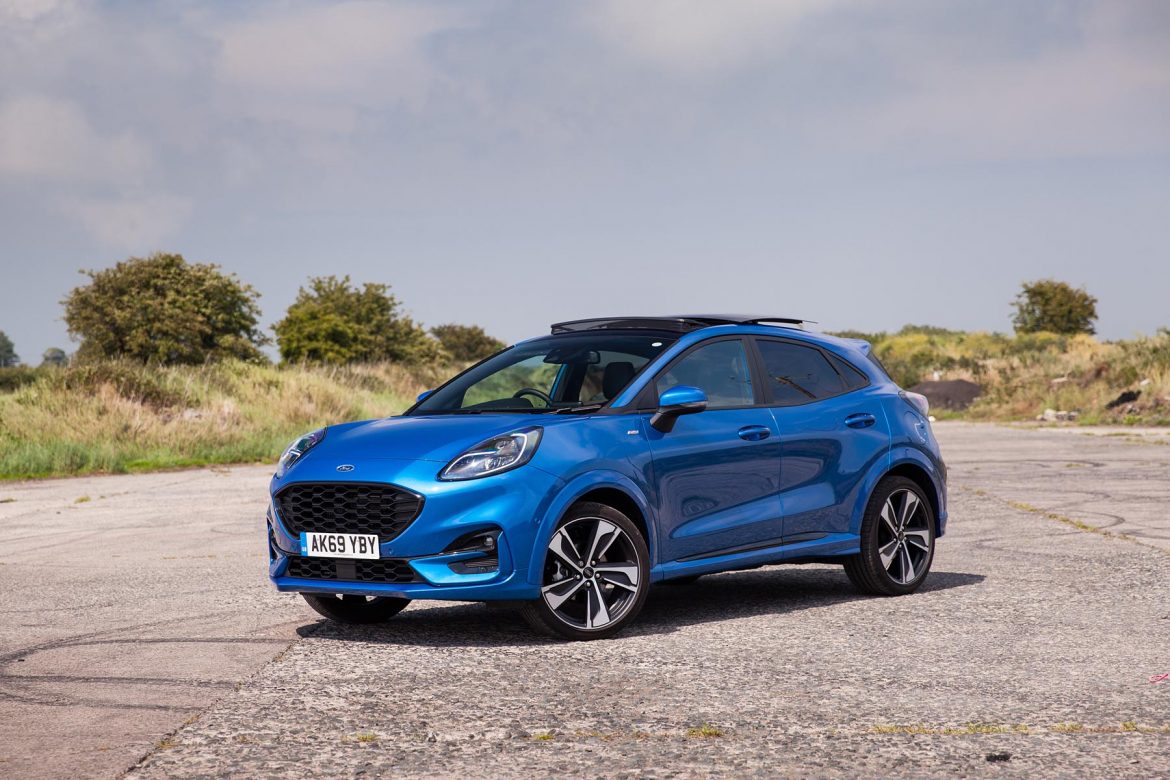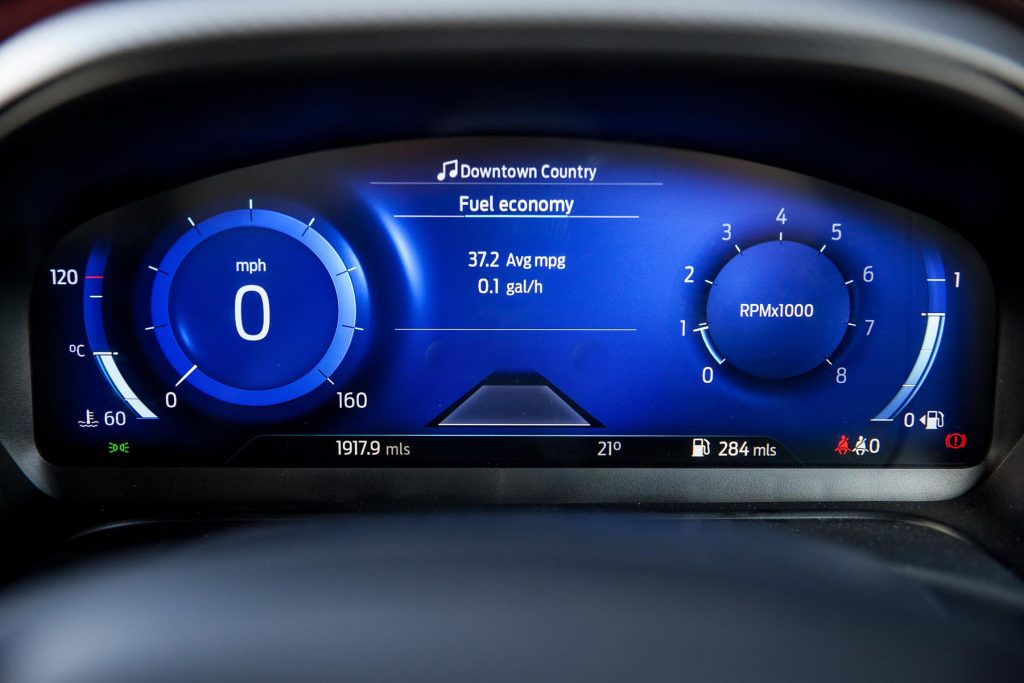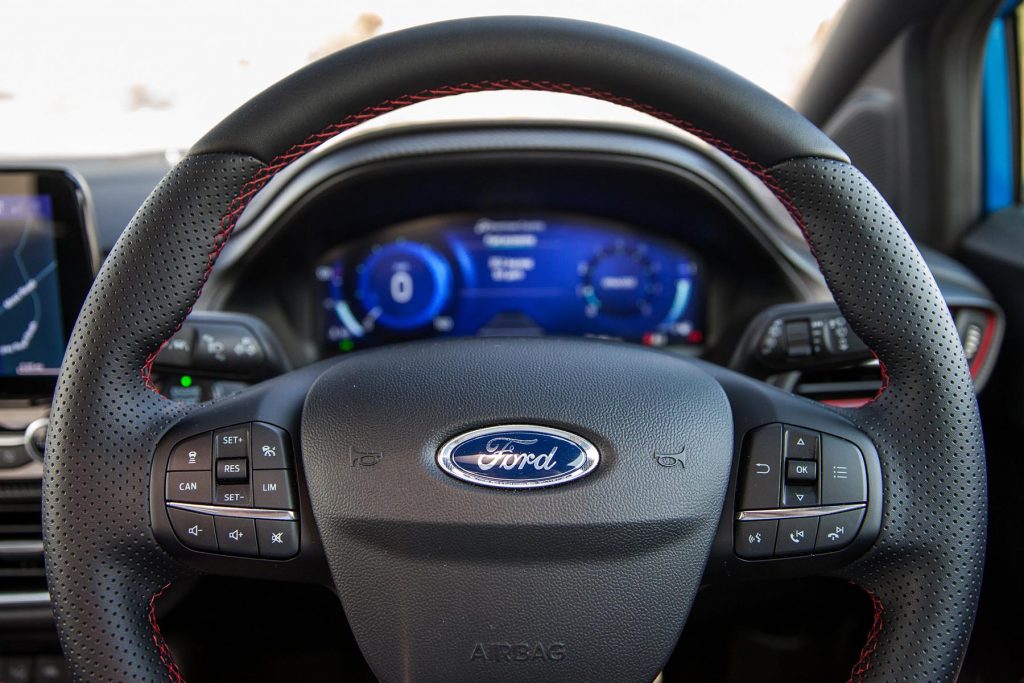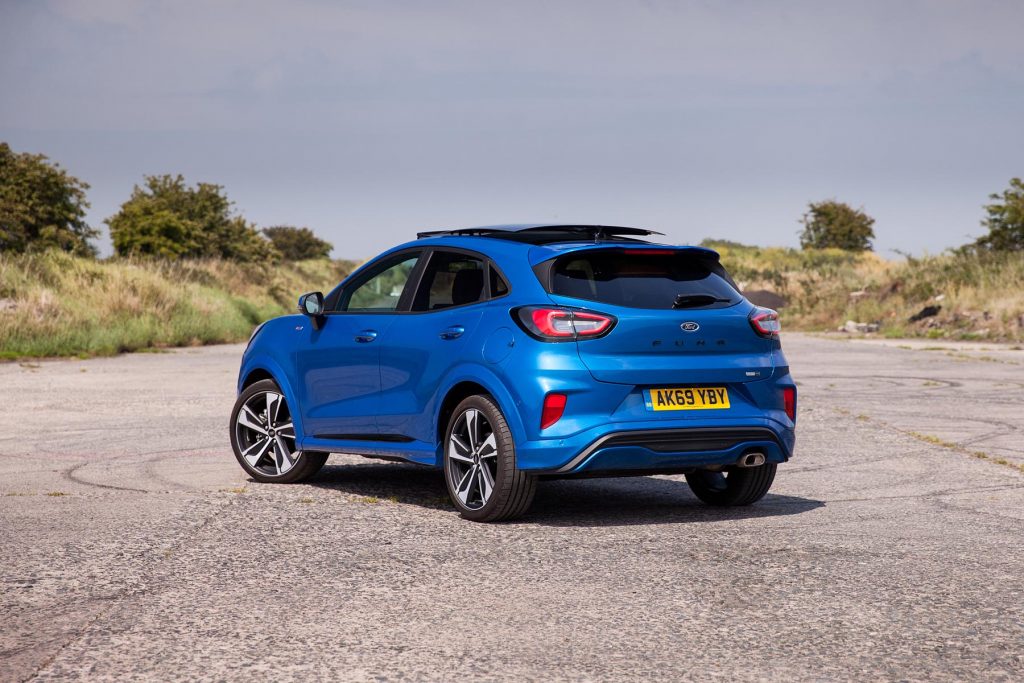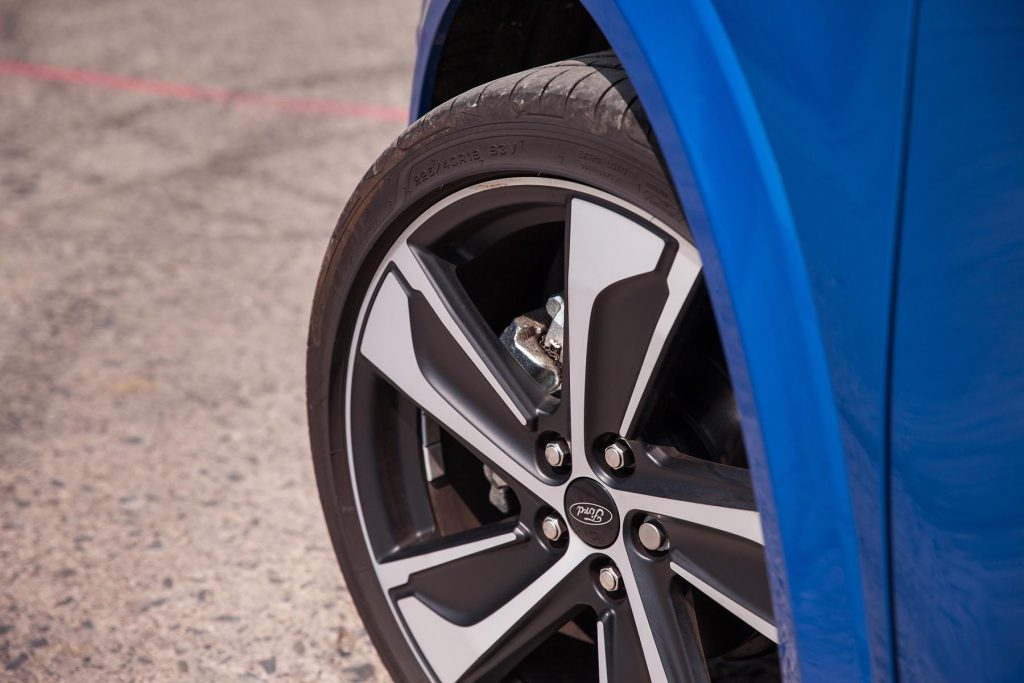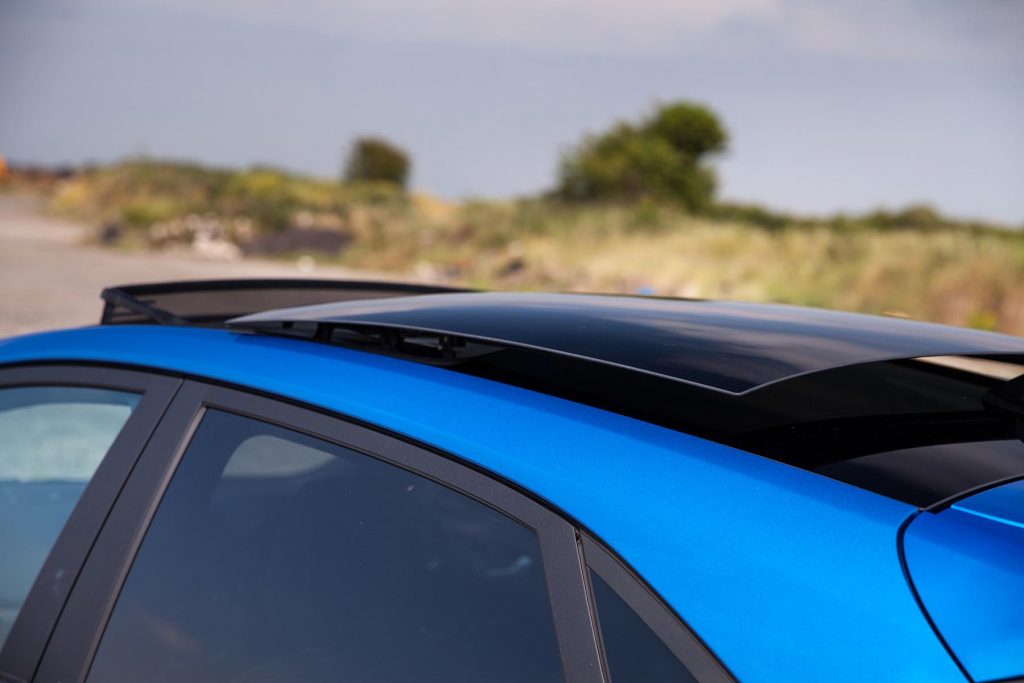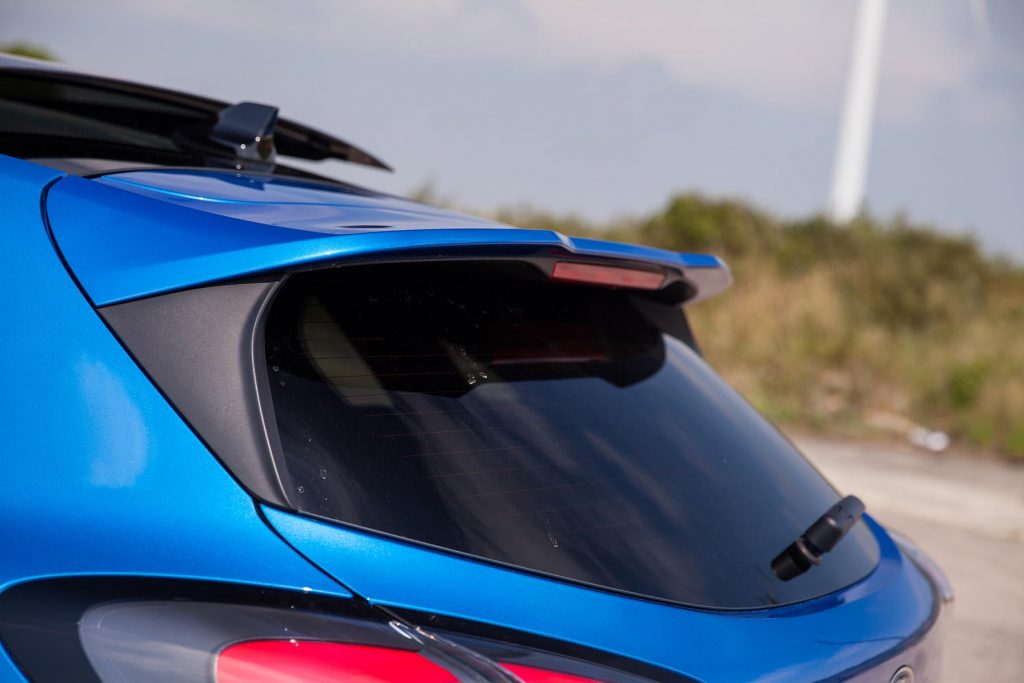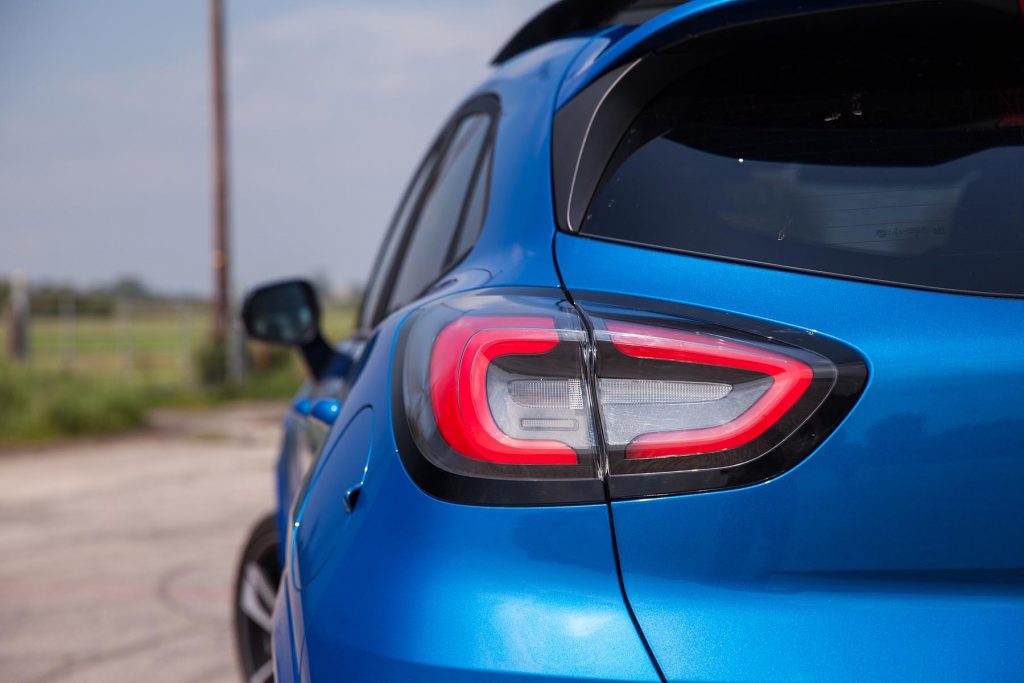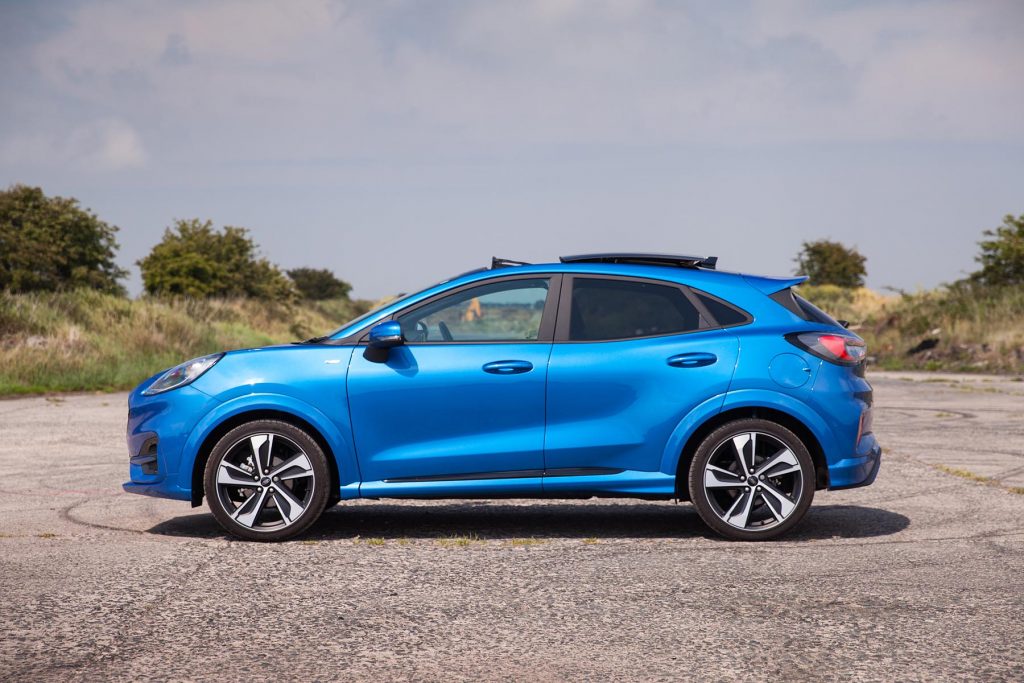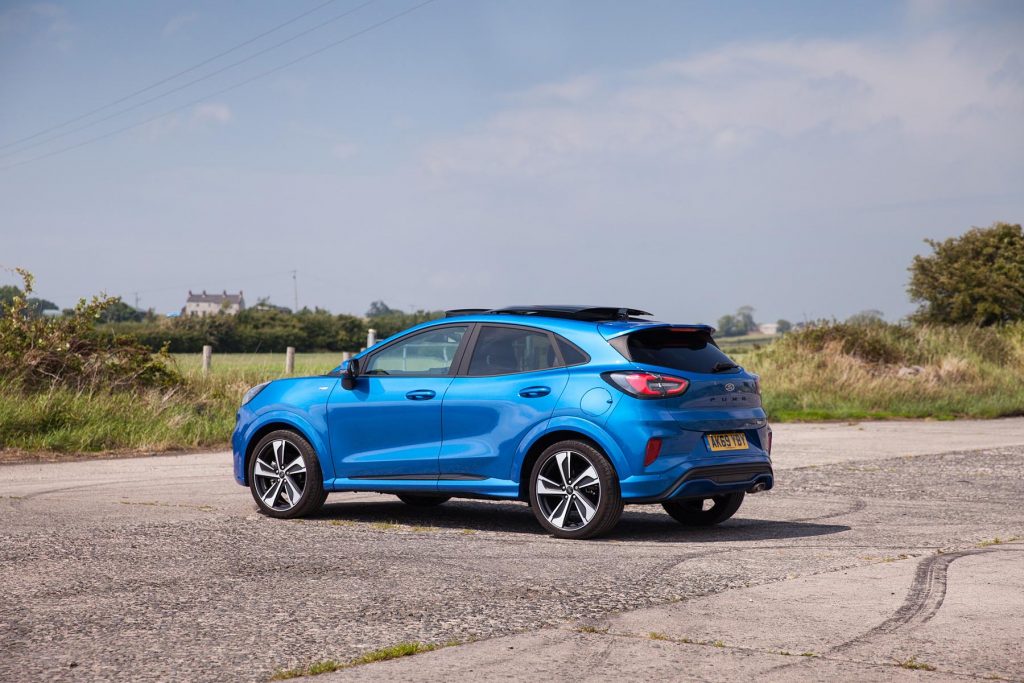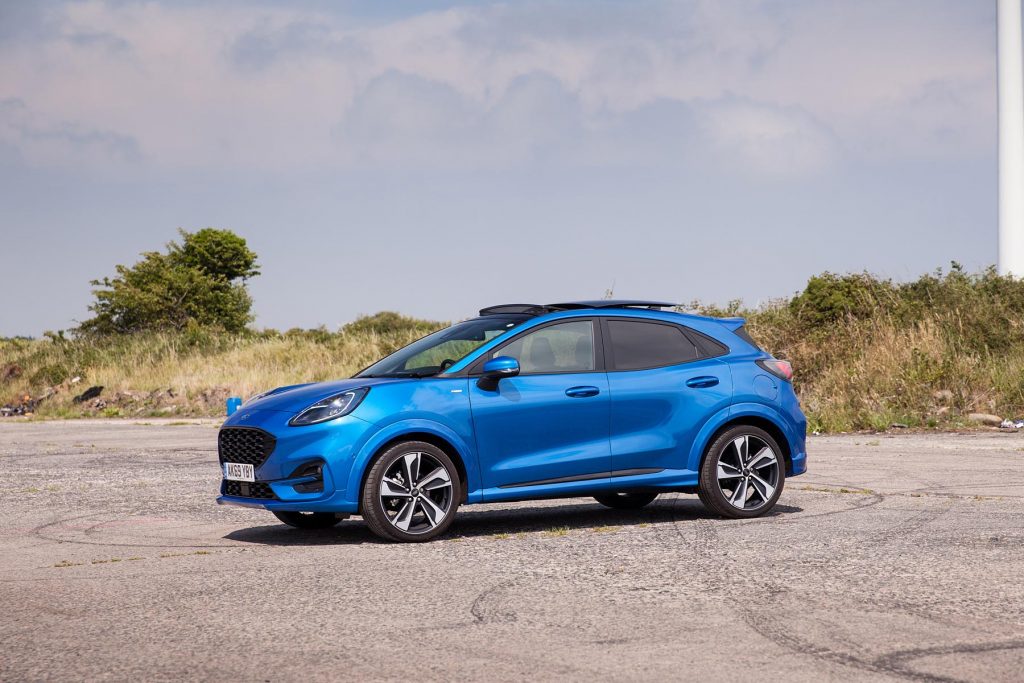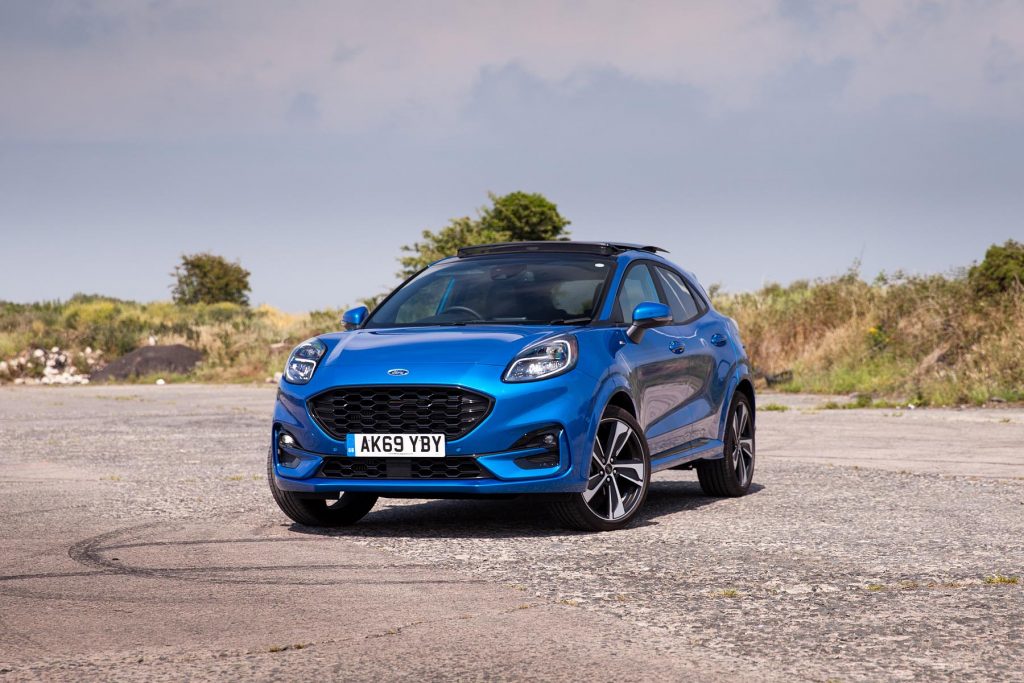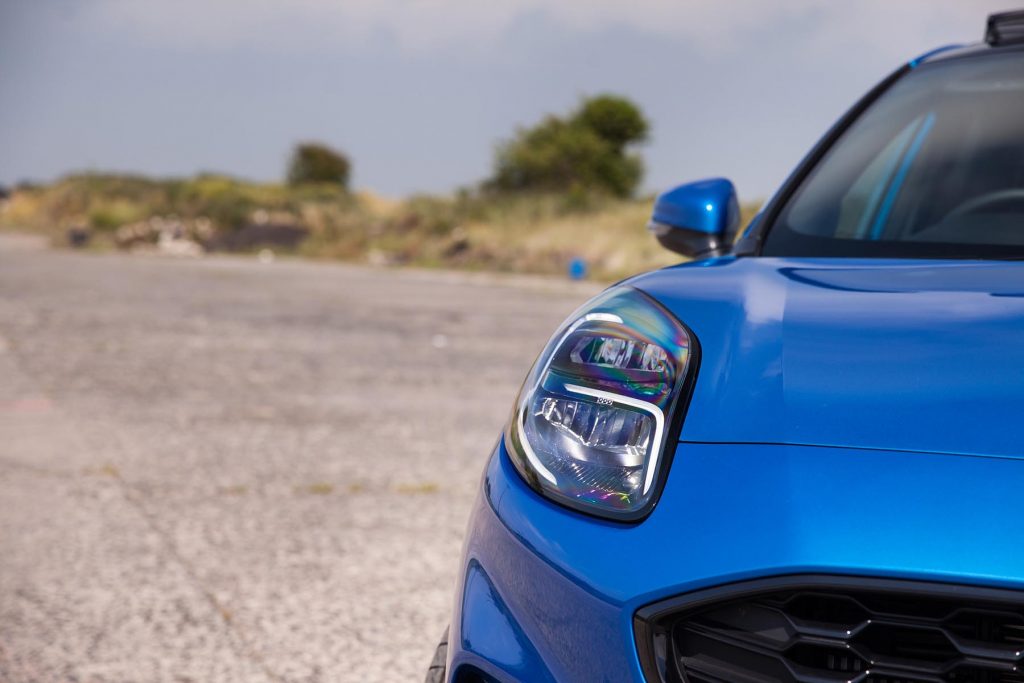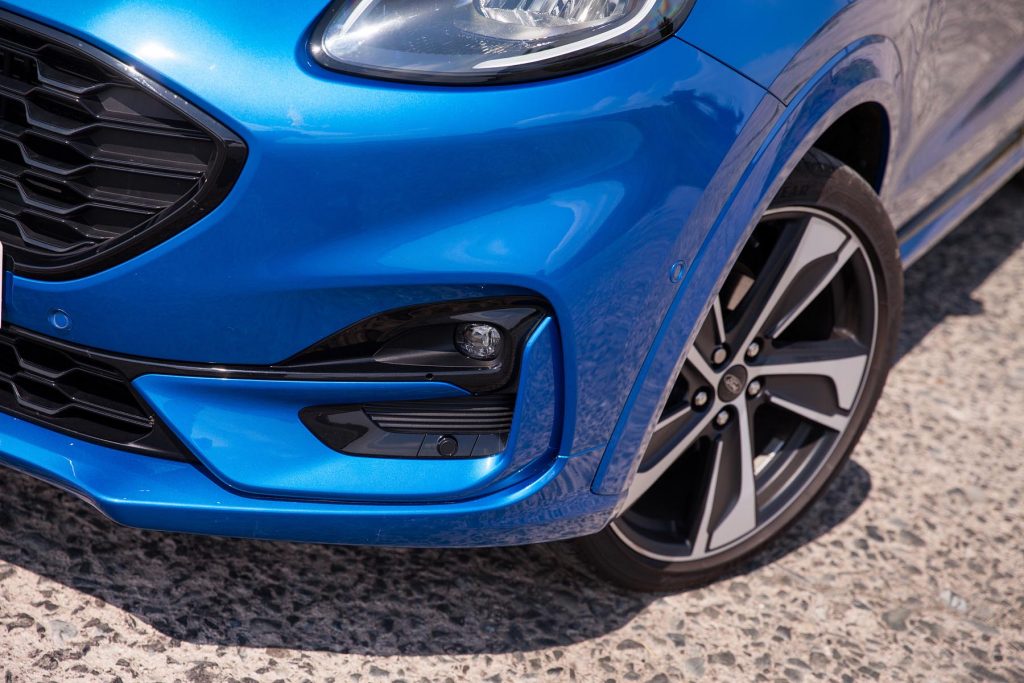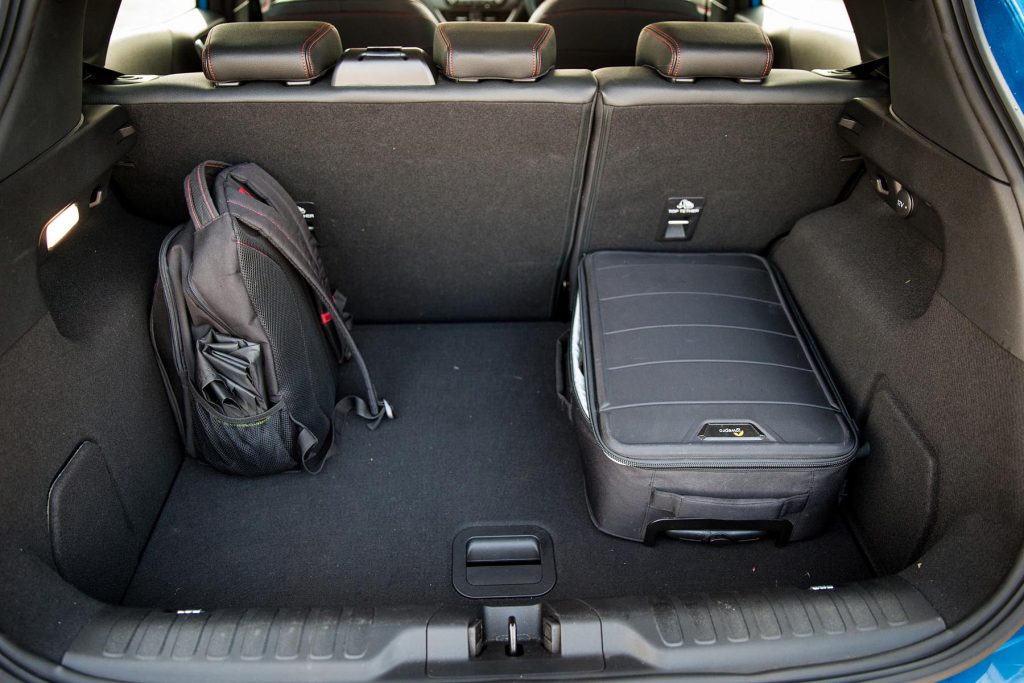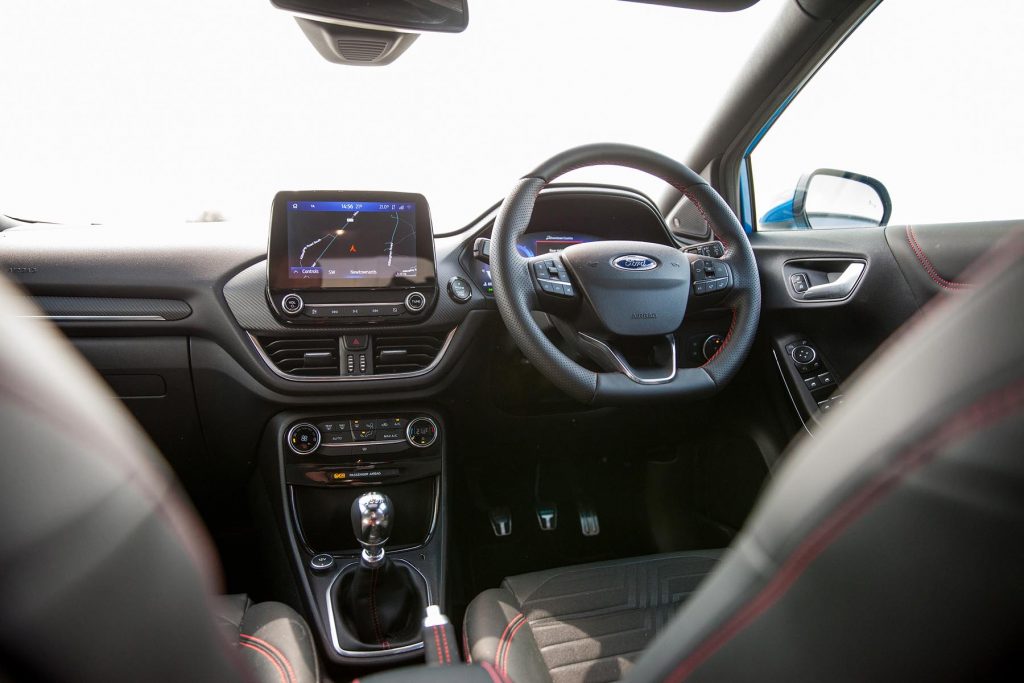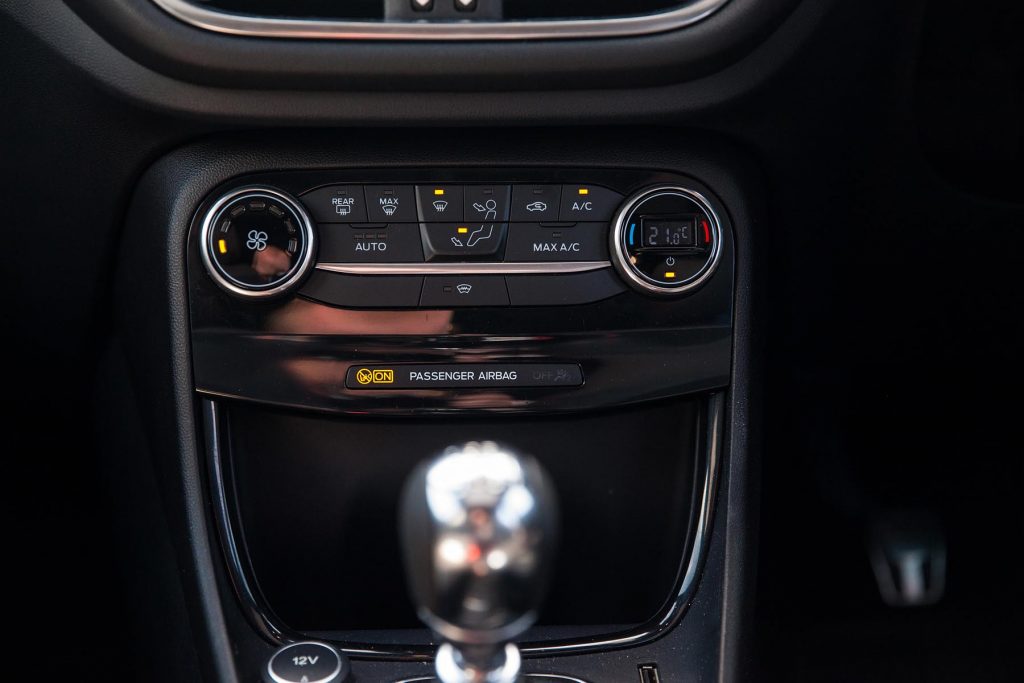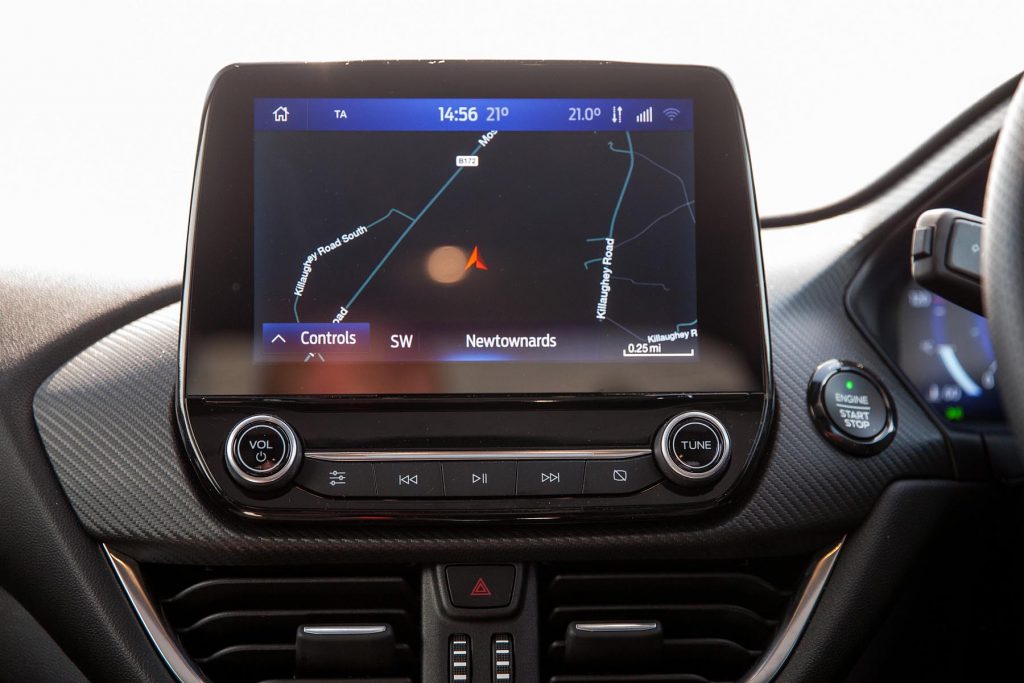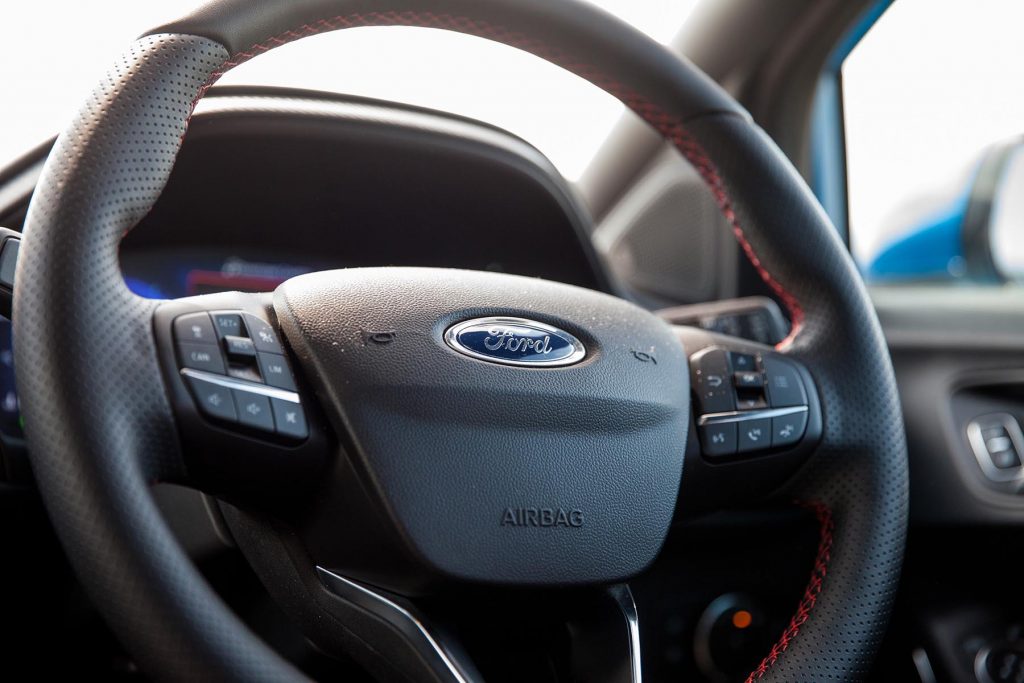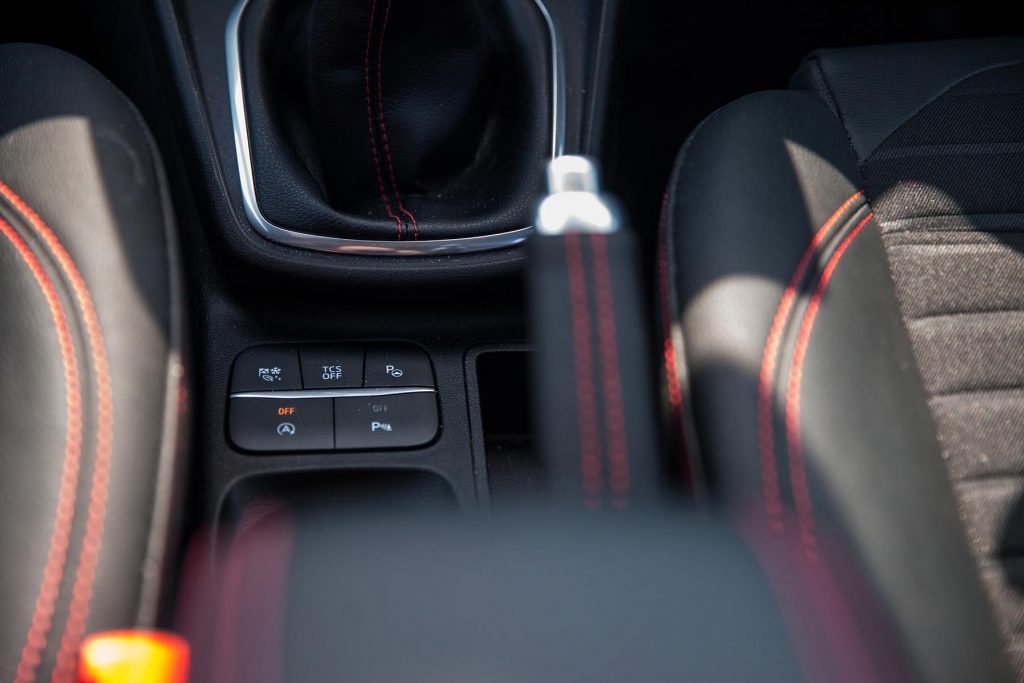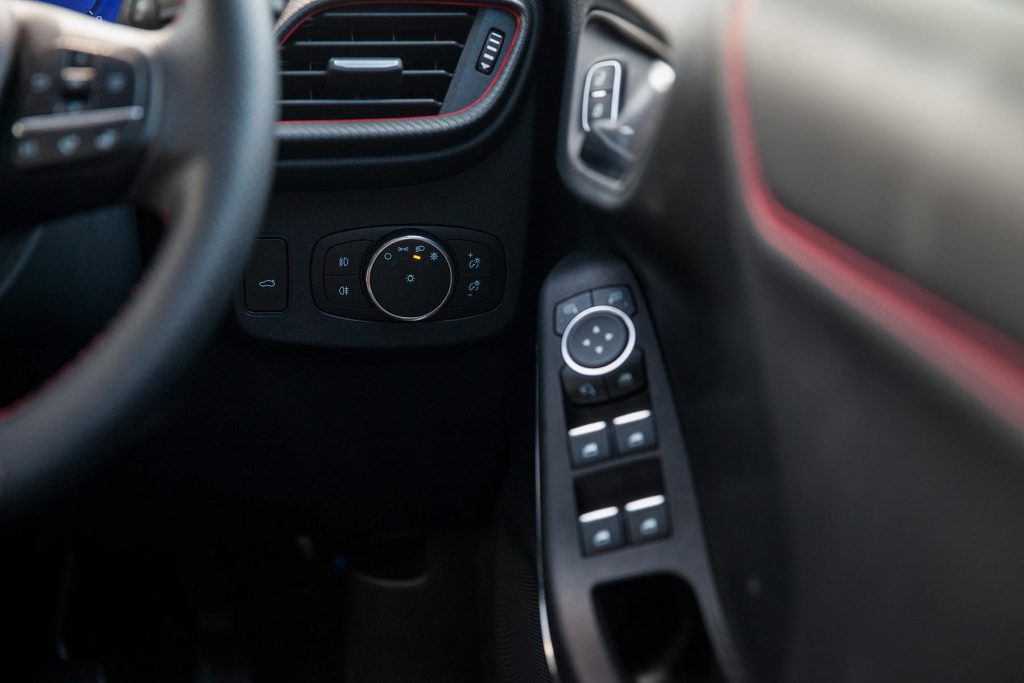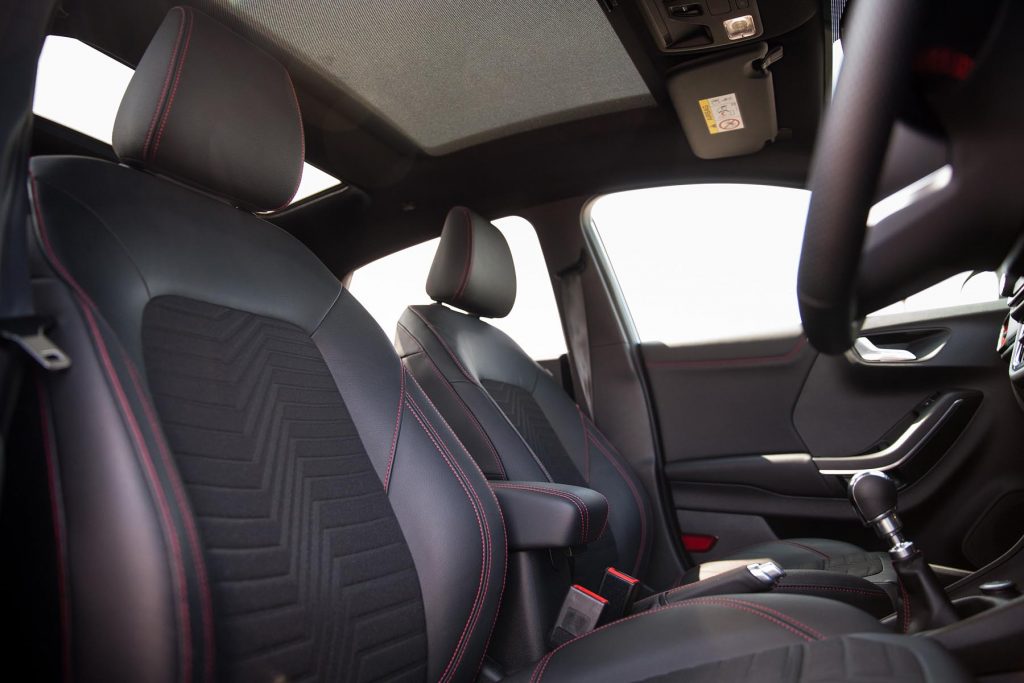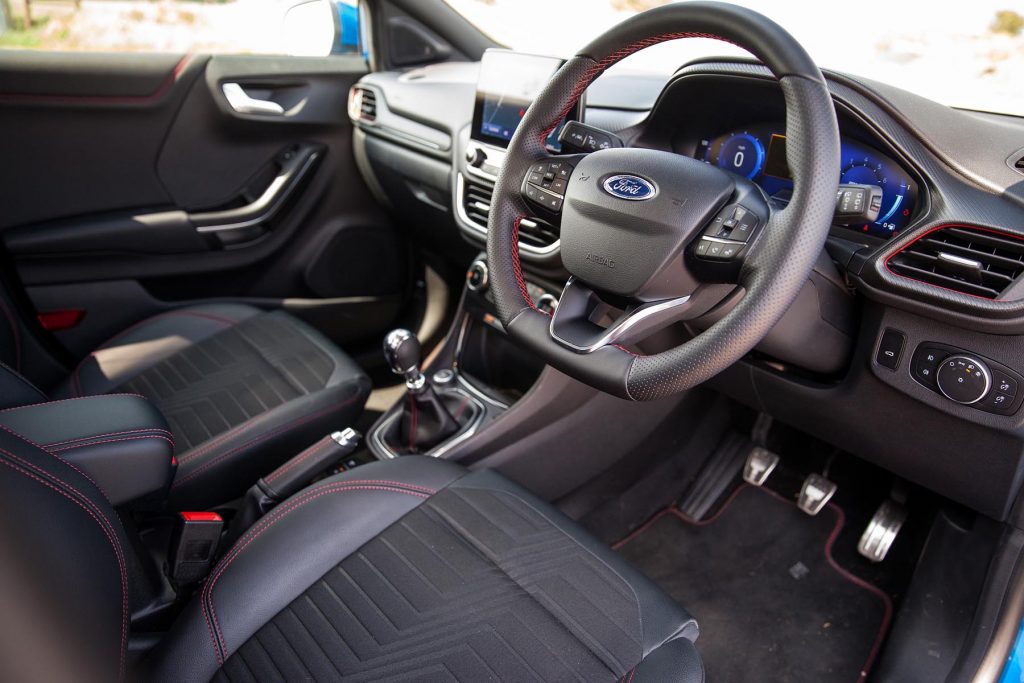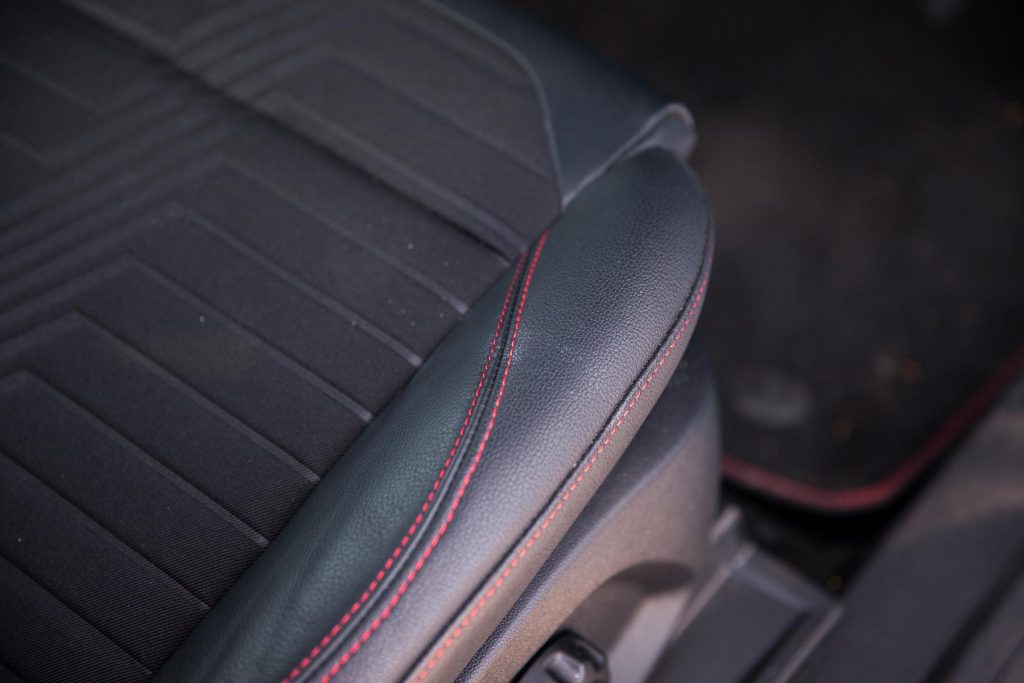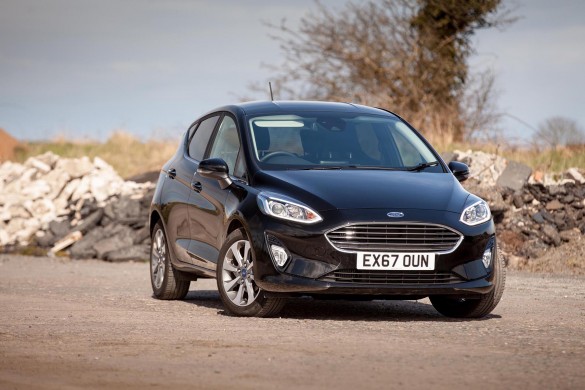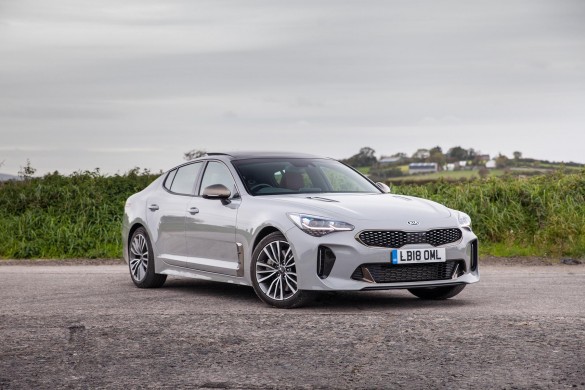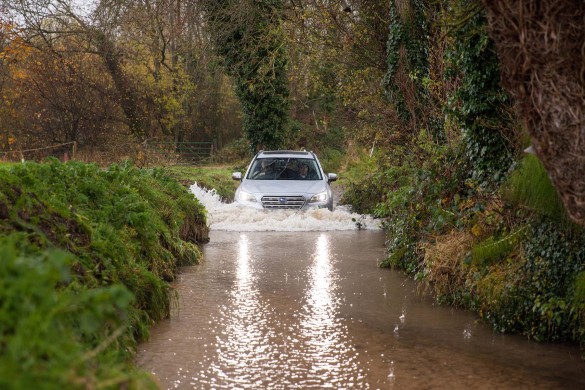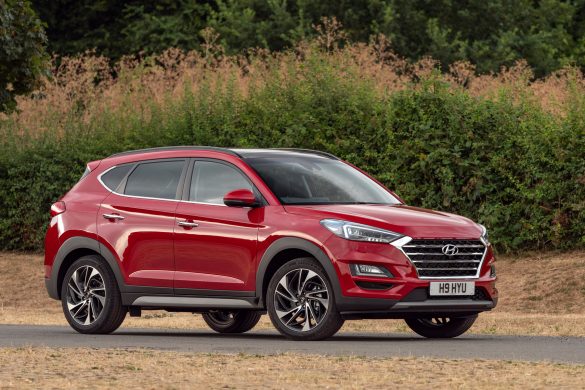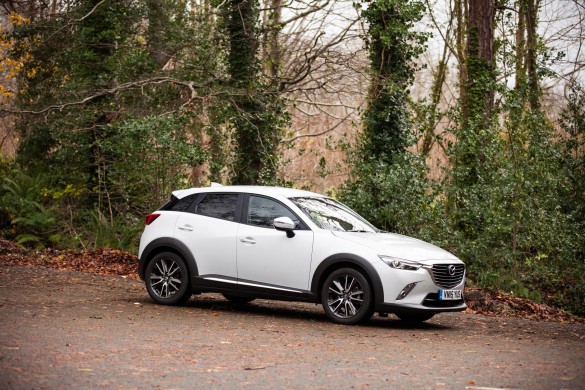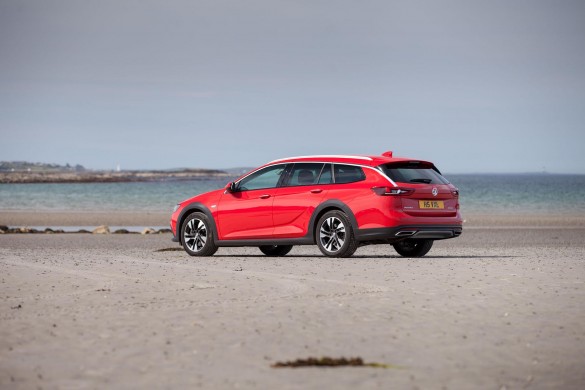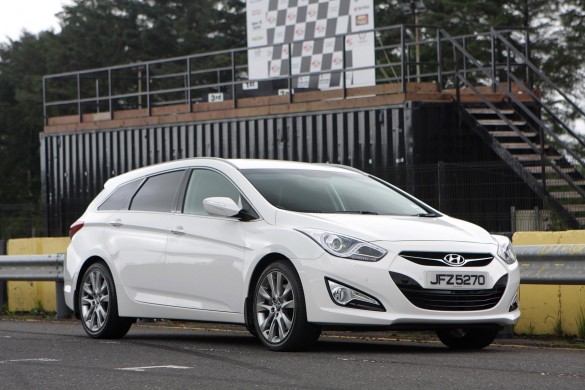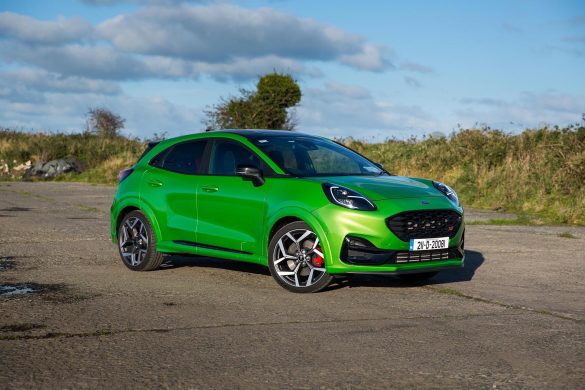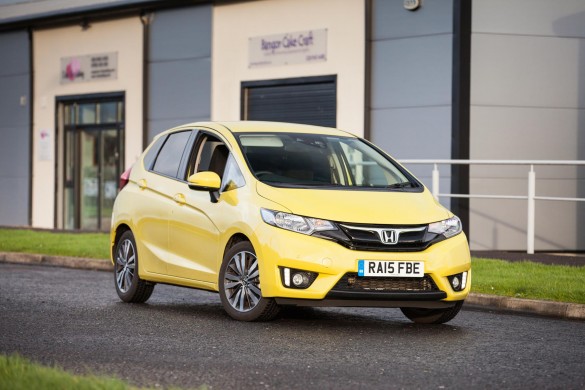After a sabbatical of eighteen-years the Puma from Ford prowls our streets once again.
Priced from £21,385 it is no longer a small sports coupe, but rather a small sports utility vehicle. Despite this, its styling has retained enough similar-ish features, that it seems suitable to bring the name of Puma back to life.
A lot has changed within the automotive industry since the previous model was discontinued, and what few survivors we have from back then, are likely to be rotten, like most Ford’s of that era, if truth be told.
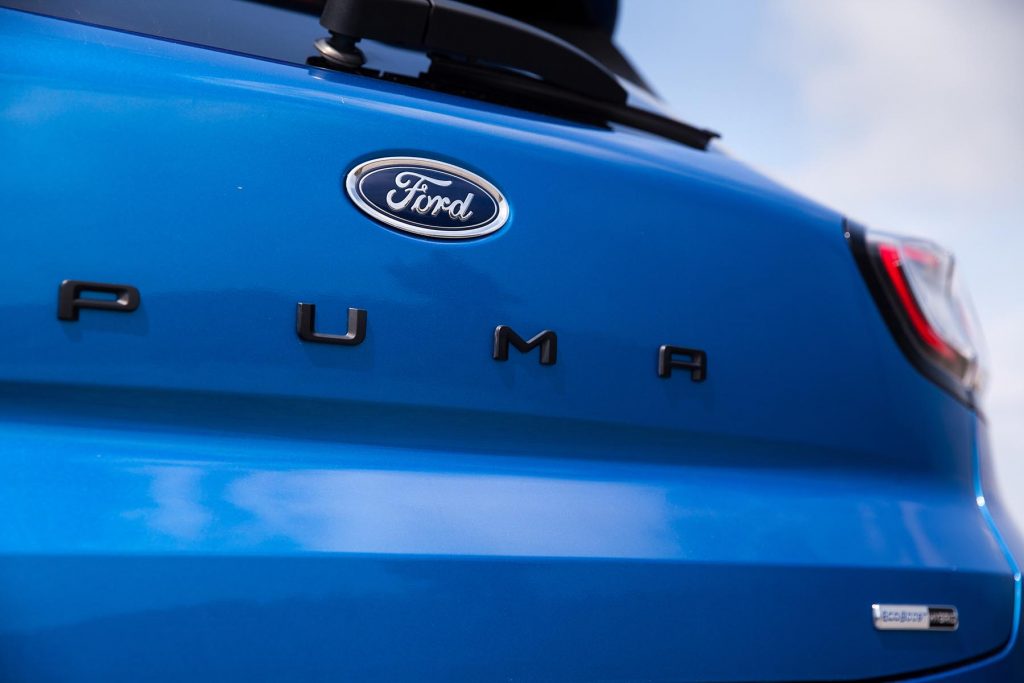
Regardless, it was a punchy little car that had great success within British rallying and even to this day, can still be seen at trackdays or clubman motorsport events.
That was then, and this is now.
Now being a time where easy-in/easy-out vehicles are in high demand. Suiting the needs of those with ailments and those with children who do not wish to break their back getting kids strapped into a low-slung car.
Now being a time where affordable sporty fun is nothing more than a distant memory, a time where ‘carbon footprint’ is a thing and the world is moving to full electrification.
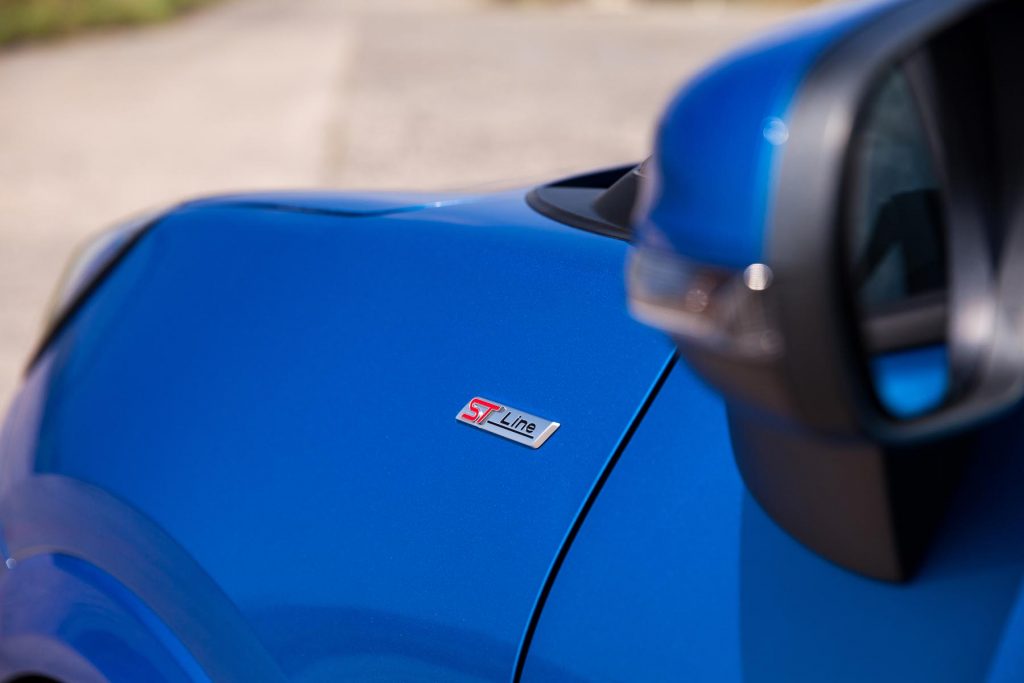
The all-new Ford Puma is a car for now and is “Engineered to help you get the most out of today’s modern living. With innovative ‘human-centric’ design, bold SUV exterior styling, and a sophisticated hybrid powertrain; Ford Puma doesn’t seek your attention – it quietly demands it,” in the words of Ford UK.
Acclaimed by sum as the best hybrid SUV of 2020, along with picking up a car of the year accolade around the time of UK launch, it arrived on my drive with huge expectation. After a brief walk around, it became apparent that this ‘big cat’ is far from huge, sitting in a segment against the likes of the Renault Captur, or Nissan’s Juke.
With bold, sharp styling being adopted by many manufacturers in today’s automotive industry, the Puma stands out from the crowd with its curvaceous cuteness. Inside the cabin isn’t as big as I’d hoped, but based upon the Ford Fiesta, it isn’t what I would call claustrophobic either, with adequate room front and rear.
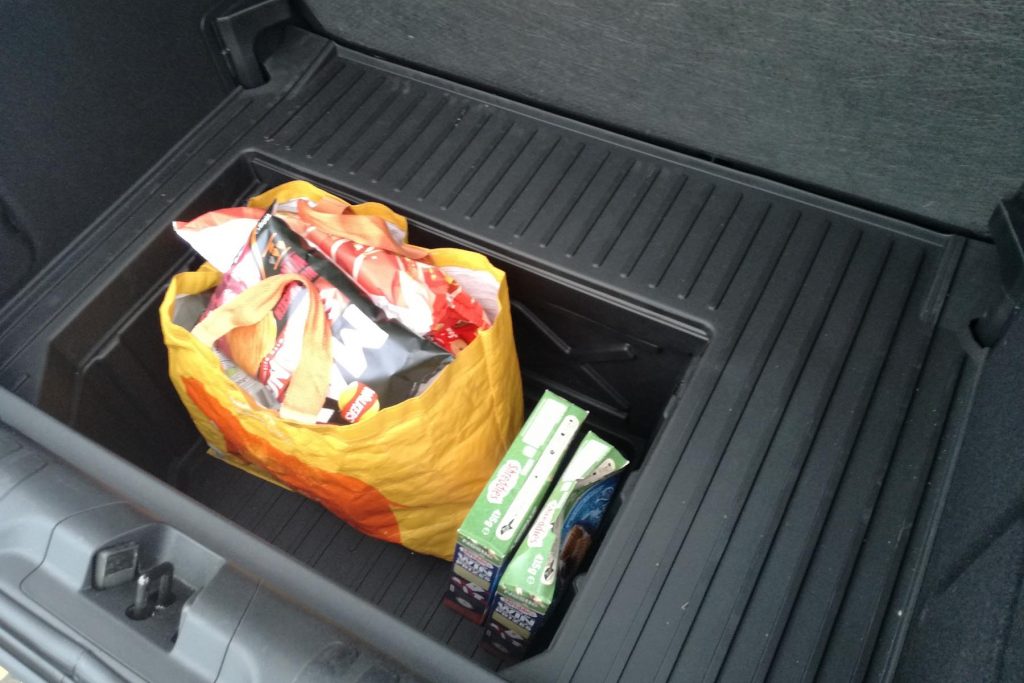
For being a small SUV the Puma has a surprisingly practical boot, featuring a floor which lifts up to reveal what is known as a ‘megabox’. As you will see from the photograph, this is a storage box which is hidden beneath the boot-floor and acts as a great way to transport your shopping safely, without it spilling across your boot floor, whilst not encroaching on space should you need to nip to IKEA after Sainsbury’s.
The Ford Puma comes to an incredibly packed segment fully loaded as standard, with the base model being more than ideal for most owners needs and, with four trim levels available, the model range starts from £21,385.
Starting with a ‘Titanium’ trim which includes 17-inch alloy wheels, projector headlamps with LED daytime running lights, pre-collision assist with autonomous emergency braking, cruise control, lane keeping aid, lane departure warning, LED rear lamps, automatic headlights with rain sensing wipers and auto high beam.
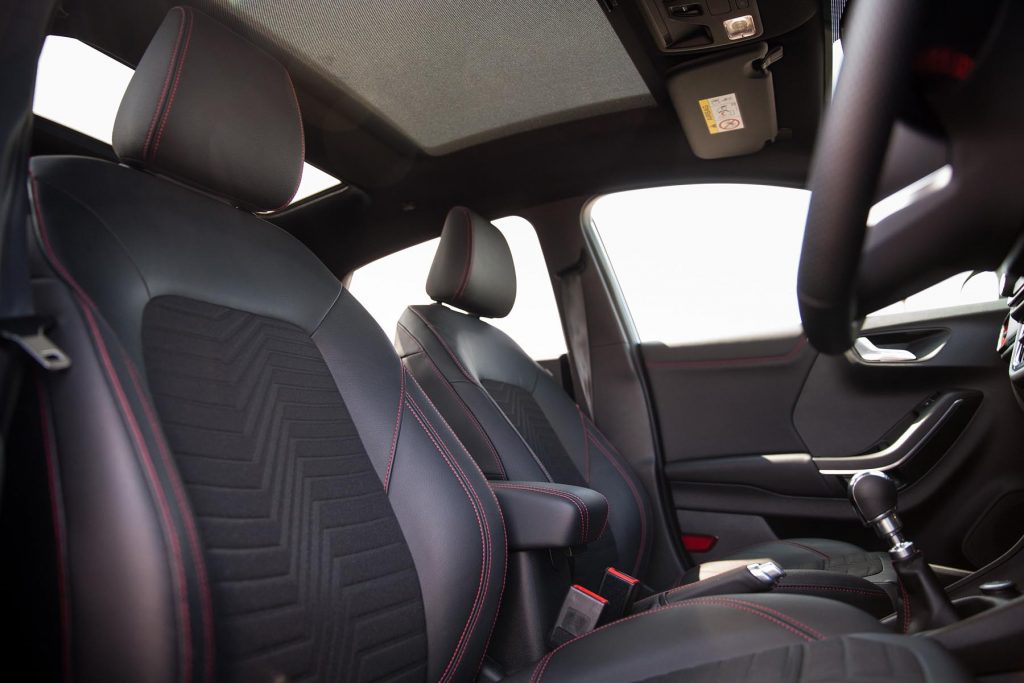
Also included on this model is rear parking sensors, quickclear heated windscreen, wireless charging pad, Ford SYNC 3 navigation with DAB and 8-inch touchscreen, leather steering wheel, handbrake and gear knob, selectable drive modes (normal, eco, sport, slippery & trail).
An ‘ST-Line’ starts from £22,335 and includes a different style of 17-inch alloy wheel, manual air conditioning, ST-Line flat-bottomed leather steering wheel, leather handbrake and aluminium gear knob, alloy sport pedals, ST-Line body kit with large rear spoiler, sports suspension, full digital 12.3-inch instrument cluster.
There is an ‘ST-Line X’ which starts from £23,435 and features 18-inch alloy wheels, half leather interior, rear privacy glass, B&O premium audio system, carbon interior trim.
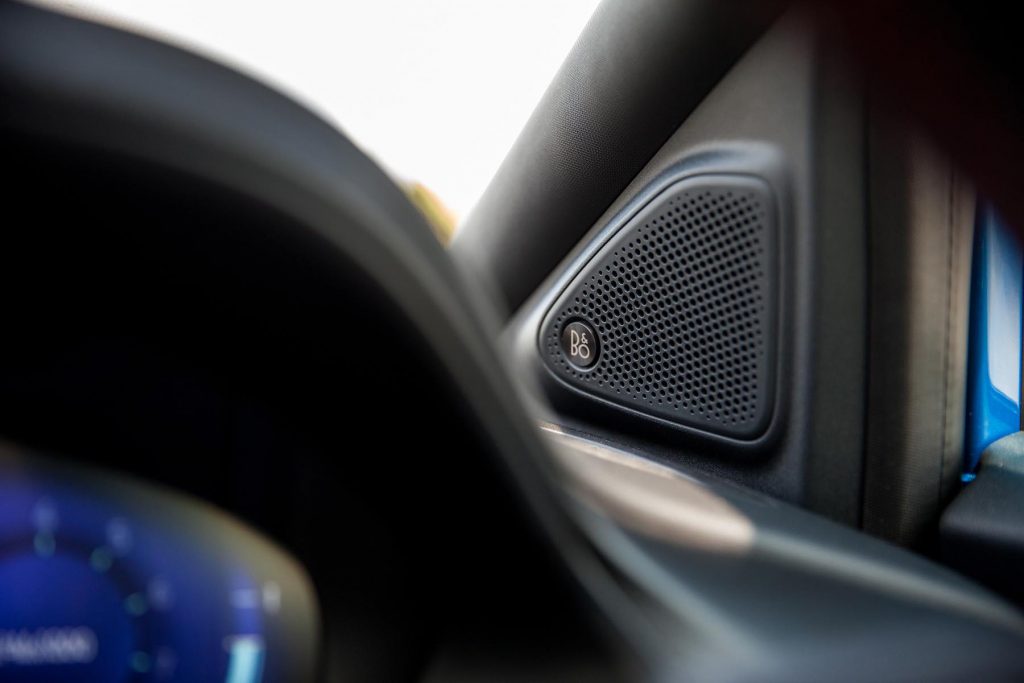
Finally, an ‘ST-Line X Vignale’ starts from £24,985 and includes exclusive 18-inch alloy wheels, fixed LED headlamps, unique Vignale style upper grille and surround, black gloss and chrome elements to both front and rear bumpers, premium Windsor heated leather seats, premium sensico wrapped instrument cluster, comfort pack, and keyless entry.
With both the Renault and Nissan starting from around £3,500 cheaper, and the Renault offering an extra 2-years warranty, can Ford offer more attractive finance deals to sway buyers who keep a tight purse, rather than wish for a large spec list?
Using advanced mild-hybrid technology, the Ford Puma is front-wheel-drive only and comes equipped with the brands 1.0-litre, 3-cylinder, turbocharged EcoBoost petrol engine and a 6-speed manual gearbox.
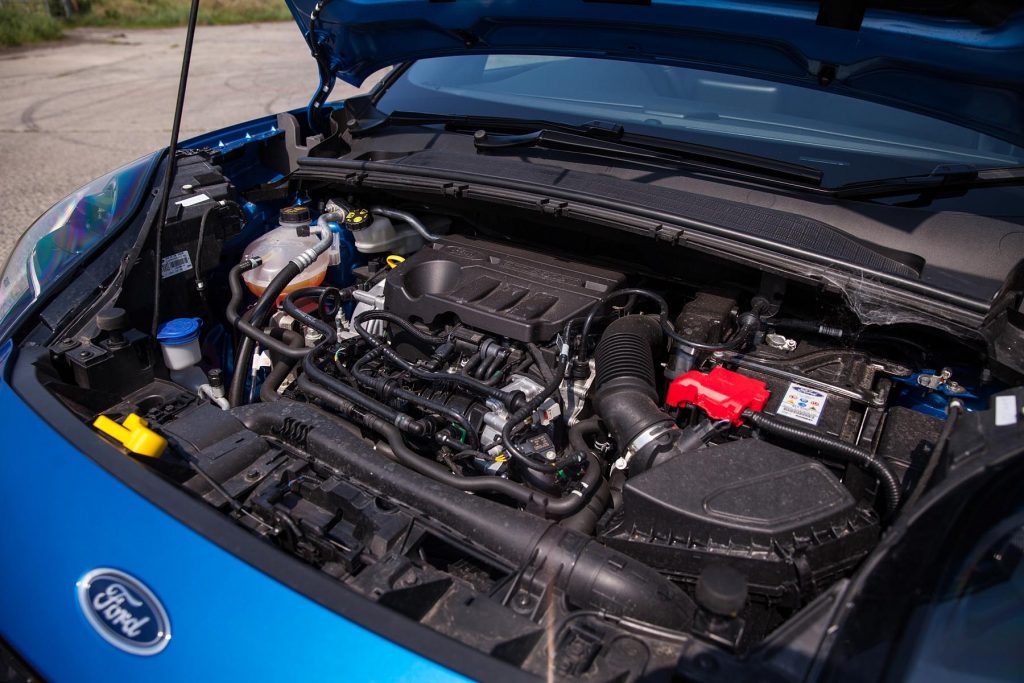
Available with two power outputs, the 125PS model will see a dash from 0-62mph in 9.8 seconds, with a top speed of 119mph whilst the 155PS version will see 0-62mph in 9 seconds with a top speed of 124mph.
Should you wish for the 7-speed automatic transmission, you lose the hybrid technology and receive the standard 1.0-litre, 125PS EcoBoost engine.
The model tested pictured, an ST-Line X 155PS hybrid, finished in the Puma’s best colour option of ‘Desert Island Blue’ and a list of options, one of which includes a panoramic tilt/slide roof, comes in at just over £27,600 and, on the scribble of notes that I take during my time with a car, “goes like (cough),” apparently.
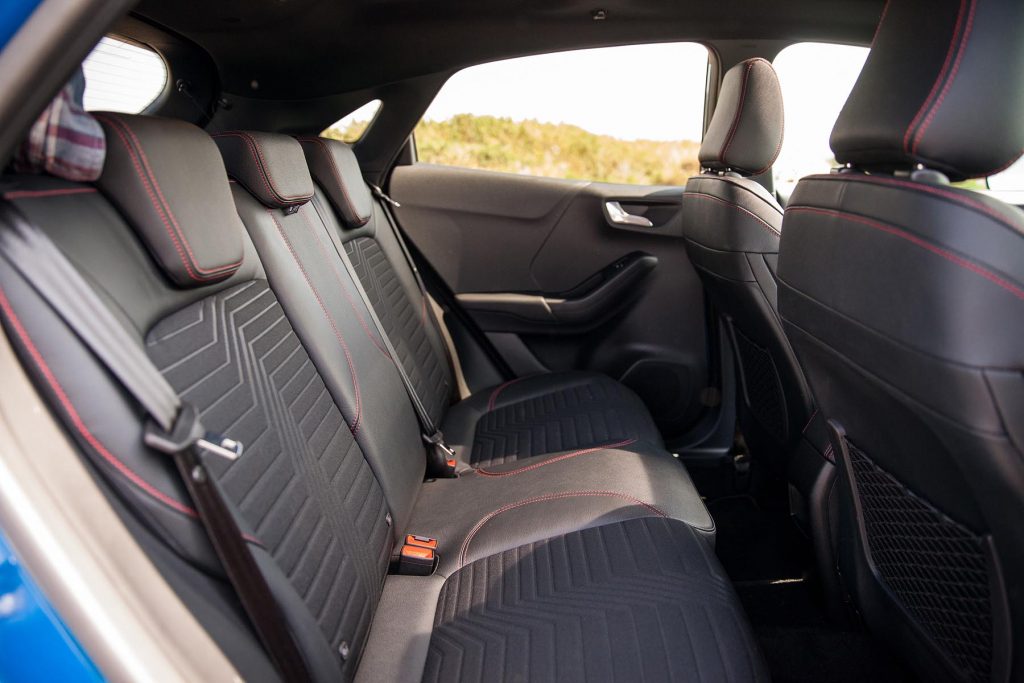
Not wishing to repeat exactly what was written, I think it is safe to say that this little SUV from Ford, in its most potent guise, left somewhat of an impression with me at its performance.
Based upon one of the best handling small cars on today’s market, the Fiesta, it is also safe to say that the Puma, despite being more elevated and slightly heavier, handles every bit as well.
After driving the Puma for a while, it becomes clear that it is designed primarily for city use as its steering is incredibly light. Even when adjusting the various driving modes and engaging sport mode, it doesn’t tighten the steering up as much as I feel it should for a fully engaging experience.
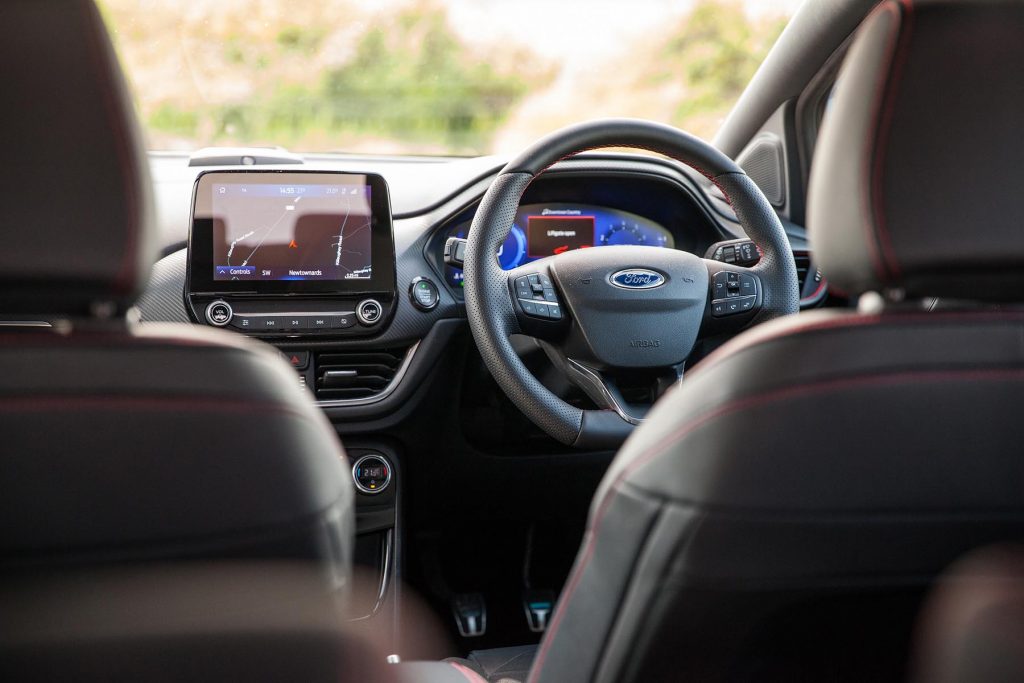
Driver aids are plenty and you should always be aware of your surroundings and speed limits, however, there are times when a quick check at the navigation can be useful to remind you of a speed limit on the road upon which year driving.
On more than one occasion, especially on the main A2 from Bangor to Belfast, the traffic sign recognition and/or the speed limit database that is displayed on the screen, wasn’t accurate.
By sticking to the speed limit displayed on the cars screen, rather than that shown on a road sign, meant that I travelled at a lesser speed than that of the flow of traffic. In its defence, I guess it means safety from a speeding fine. But if Google Maps can get it right on my aging phone, why can’t a brand-new state-of-the-art car do it?
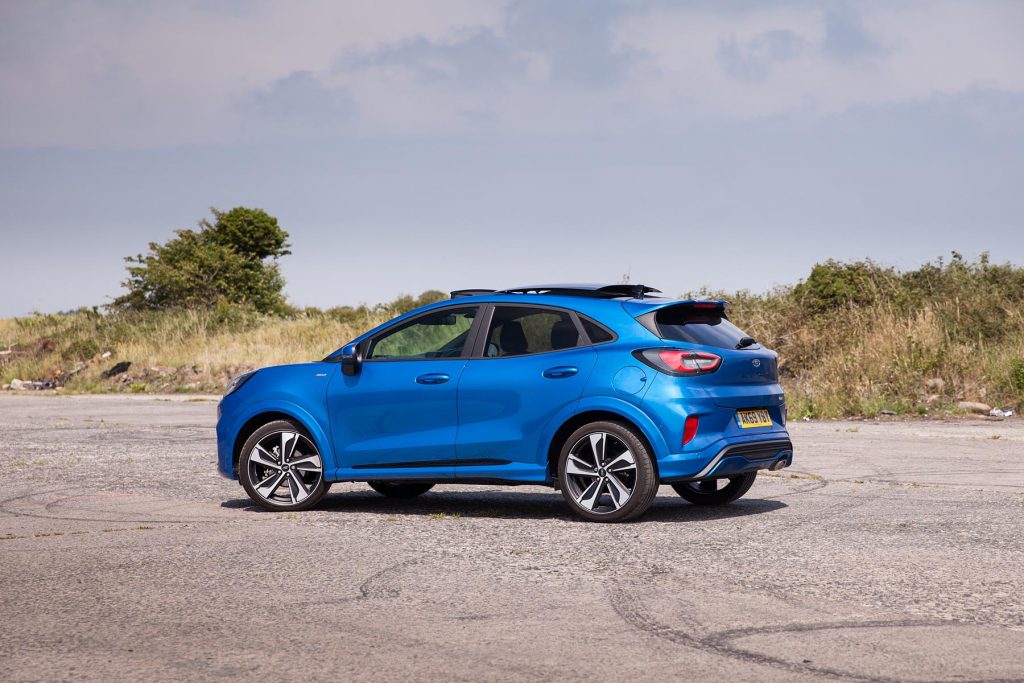
Grumbling aside, I can definitely see the appeal of this compact SUV and in standard trim it offers more than its rivals, especially in the get-up-and-go and agility stakes. During my week’s test, average fuel consumption was just 37.2mpg.
Ford offer 3-year/60,000 mile warranty and I think it is safe to say that this Puma puts the term sport into SUV.
Fact File for model tested
Make : Ford
Model : Puma
Trim : ST-Line X
Engine : 1.0-litre turbocharged petrol mild-hybrid
Gearbox : 6-speed manual
Cost : circa £27,600
Words & Photos: GRAHAM BAALHAM-CURRY
images must not be used in any way without prior written consent of the photographer
